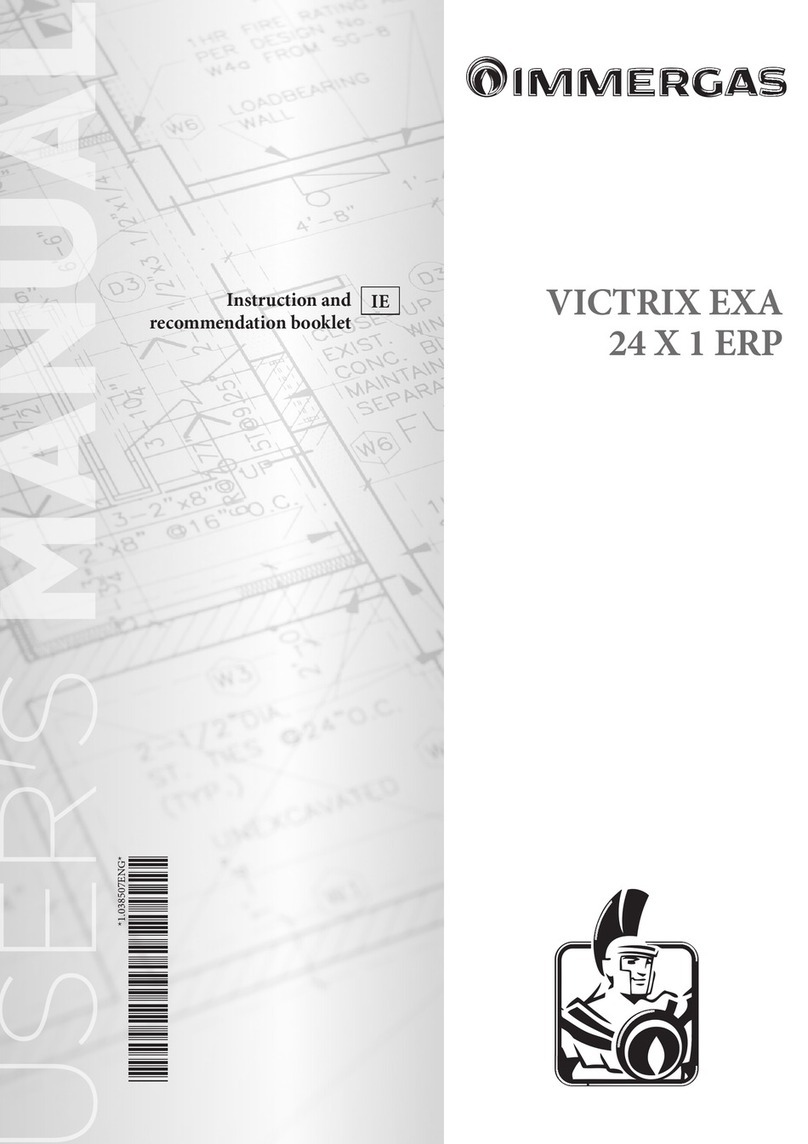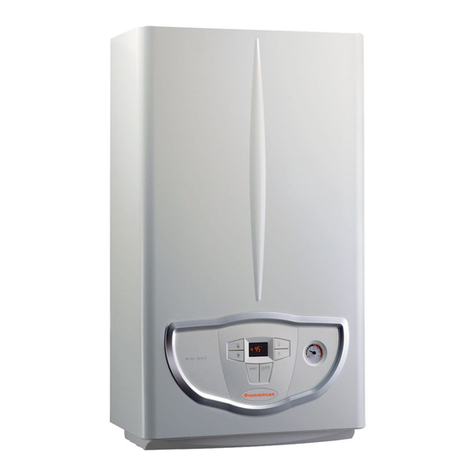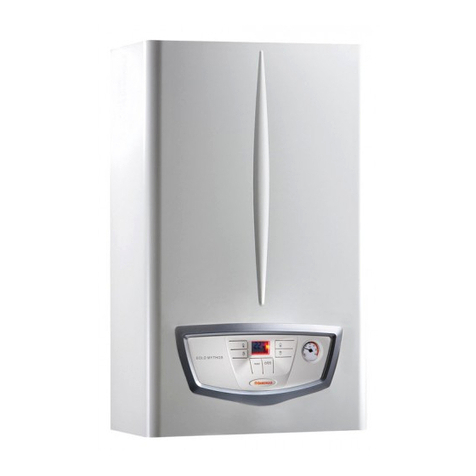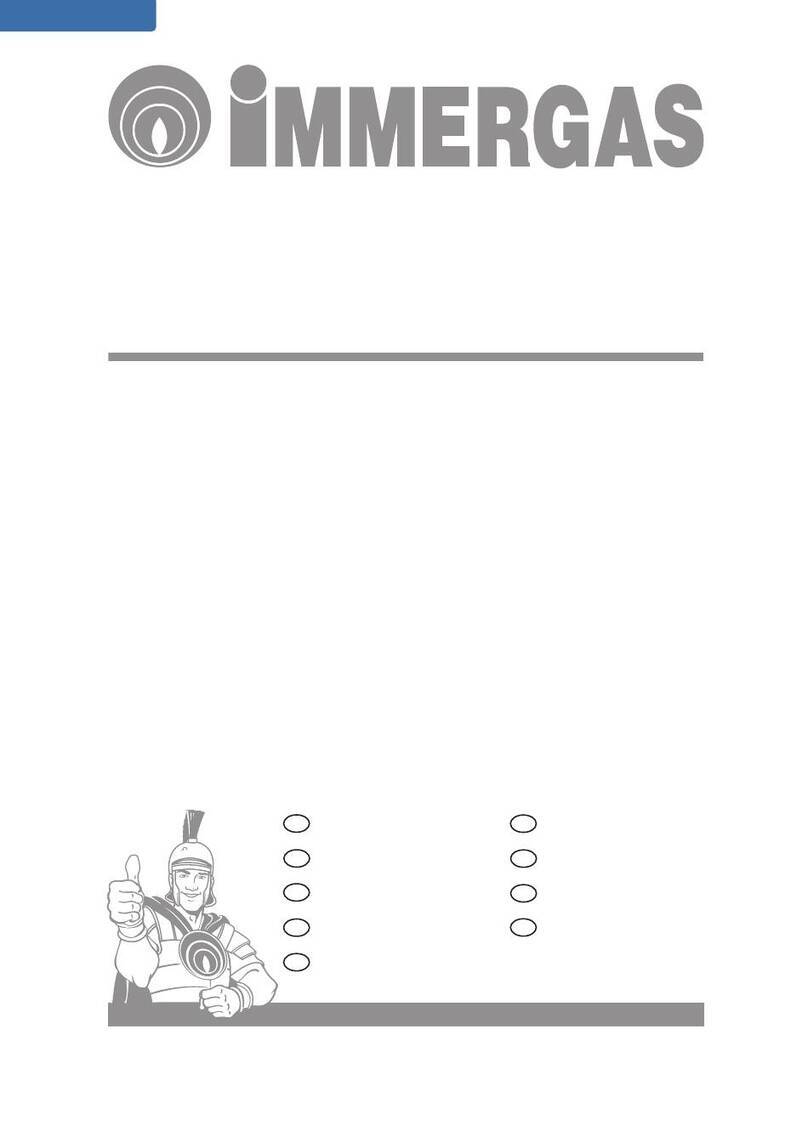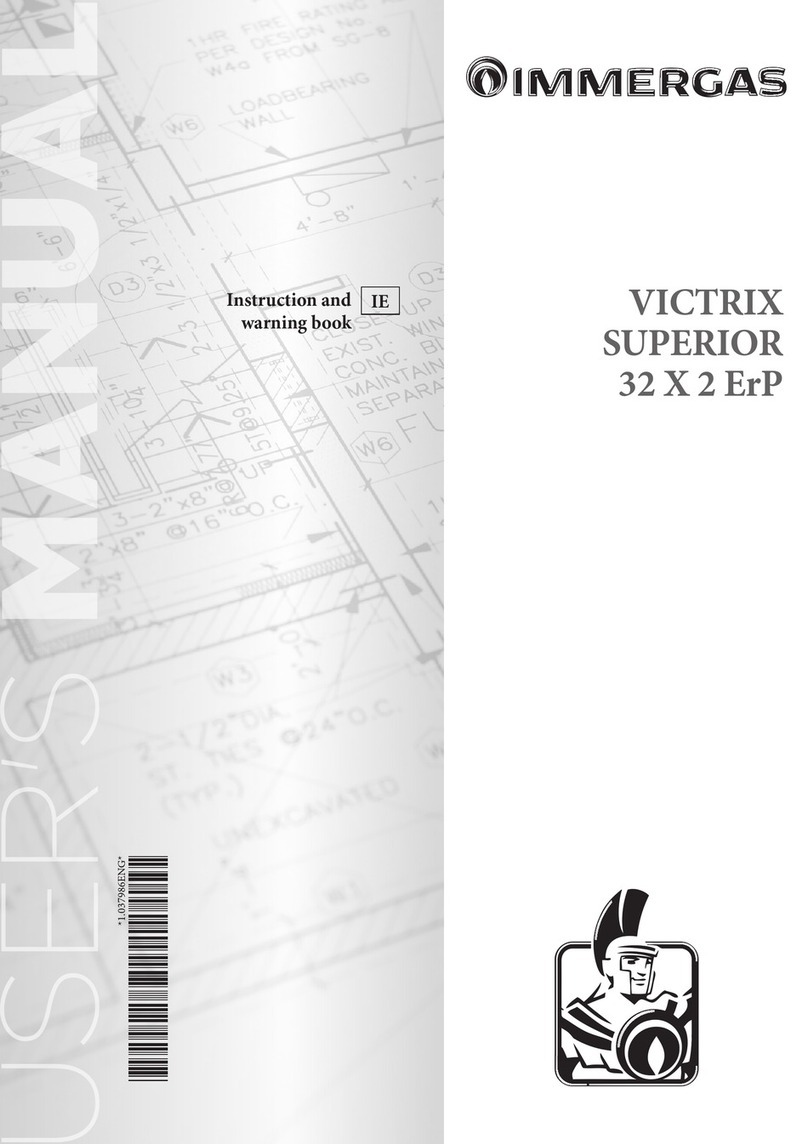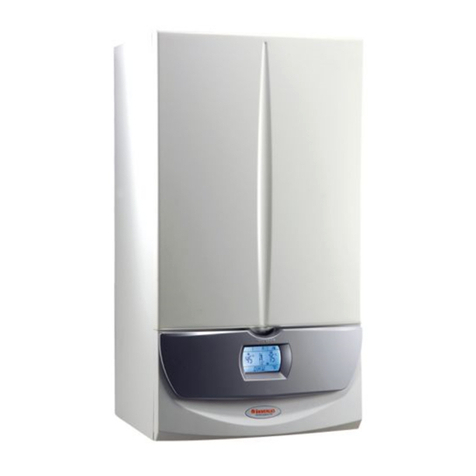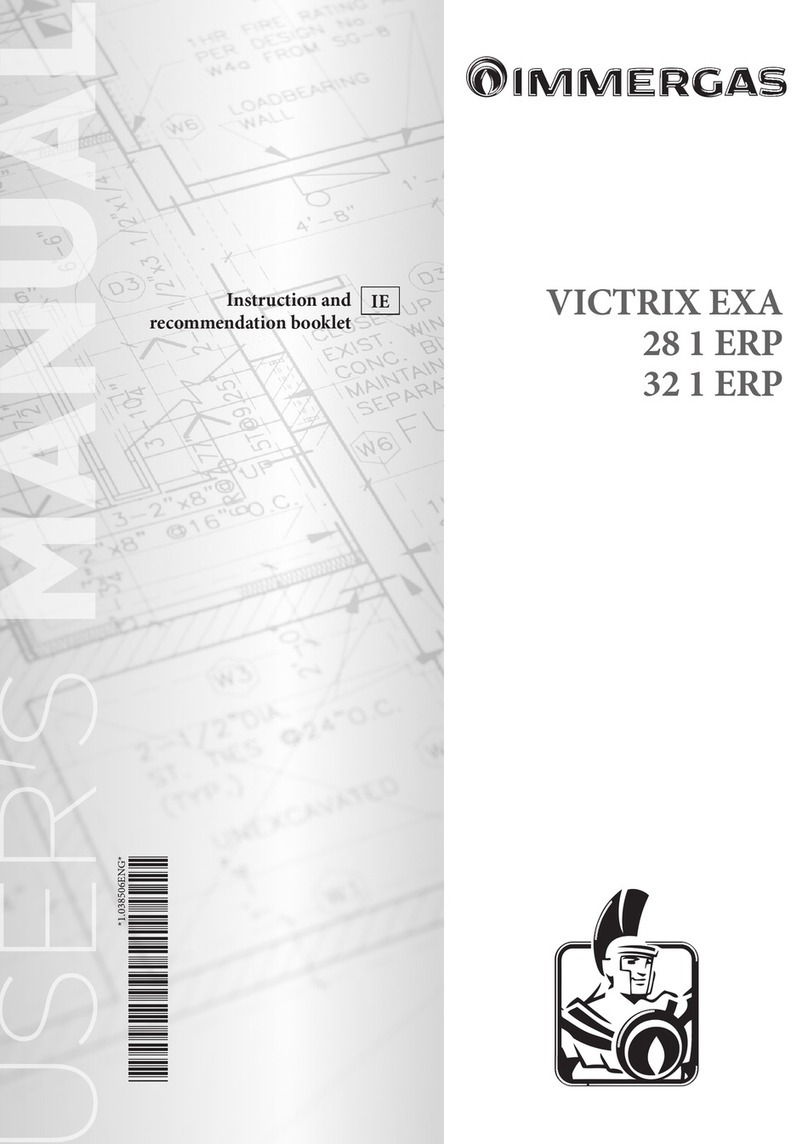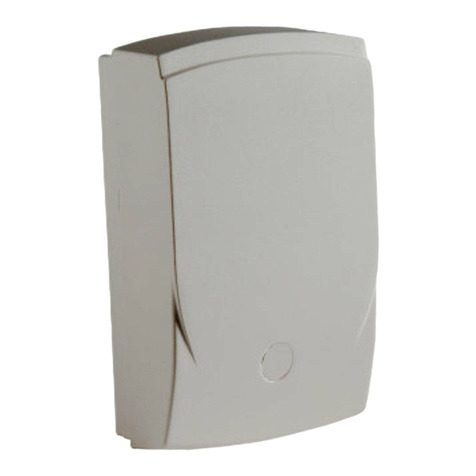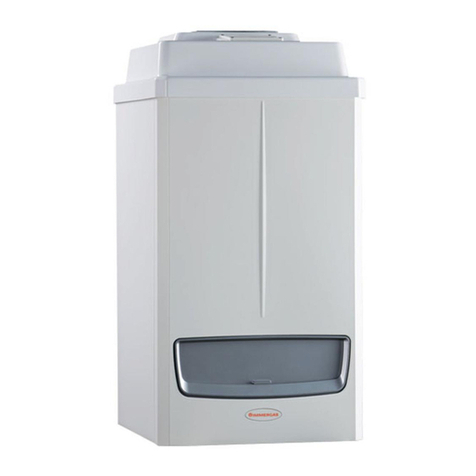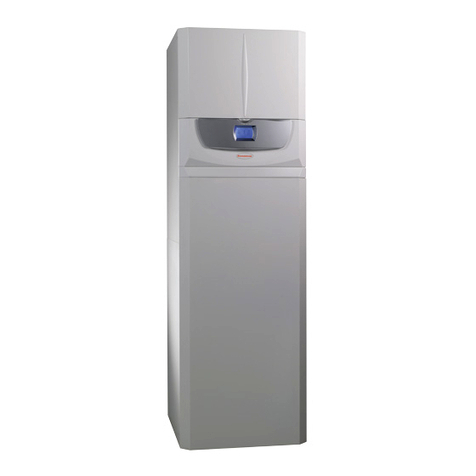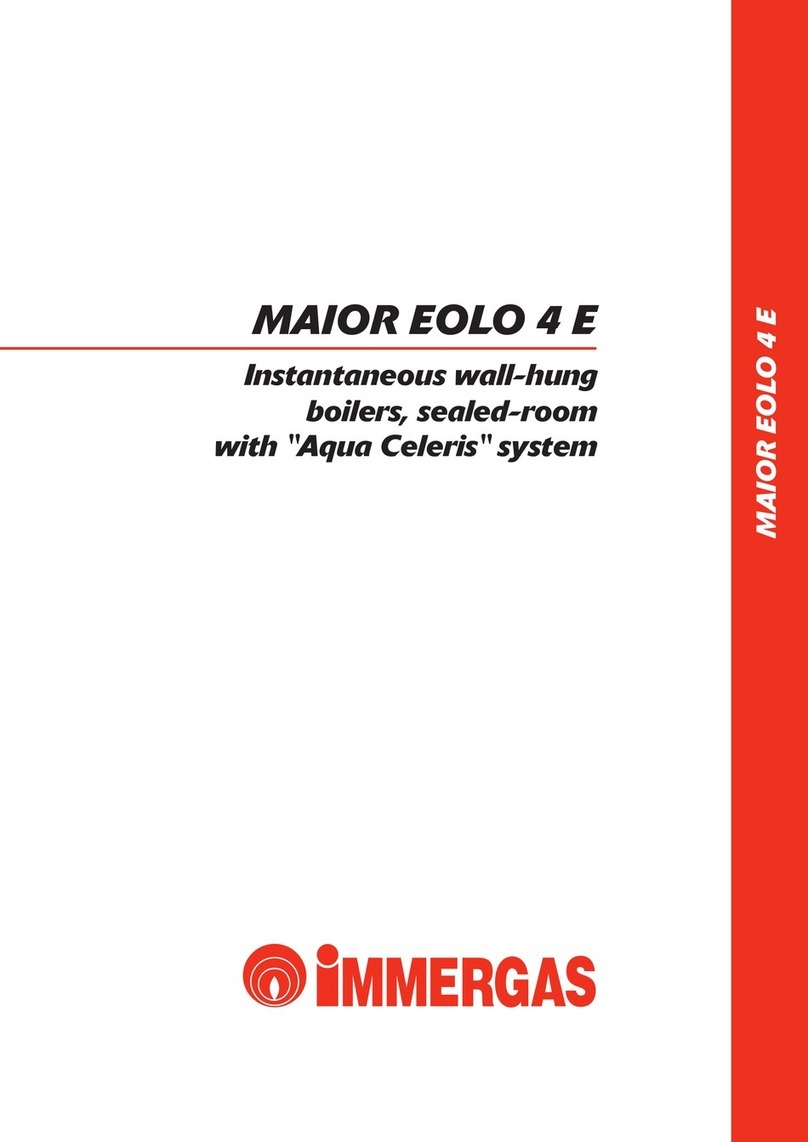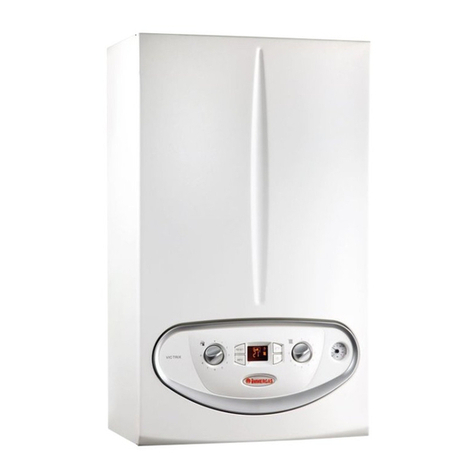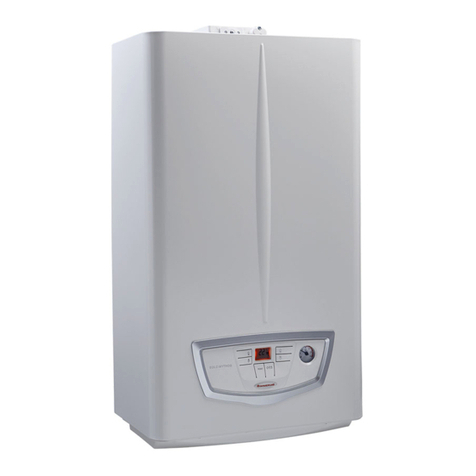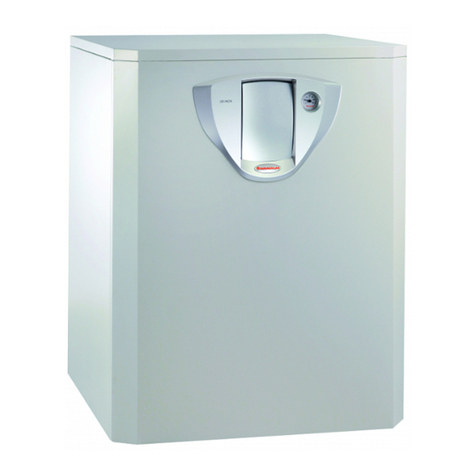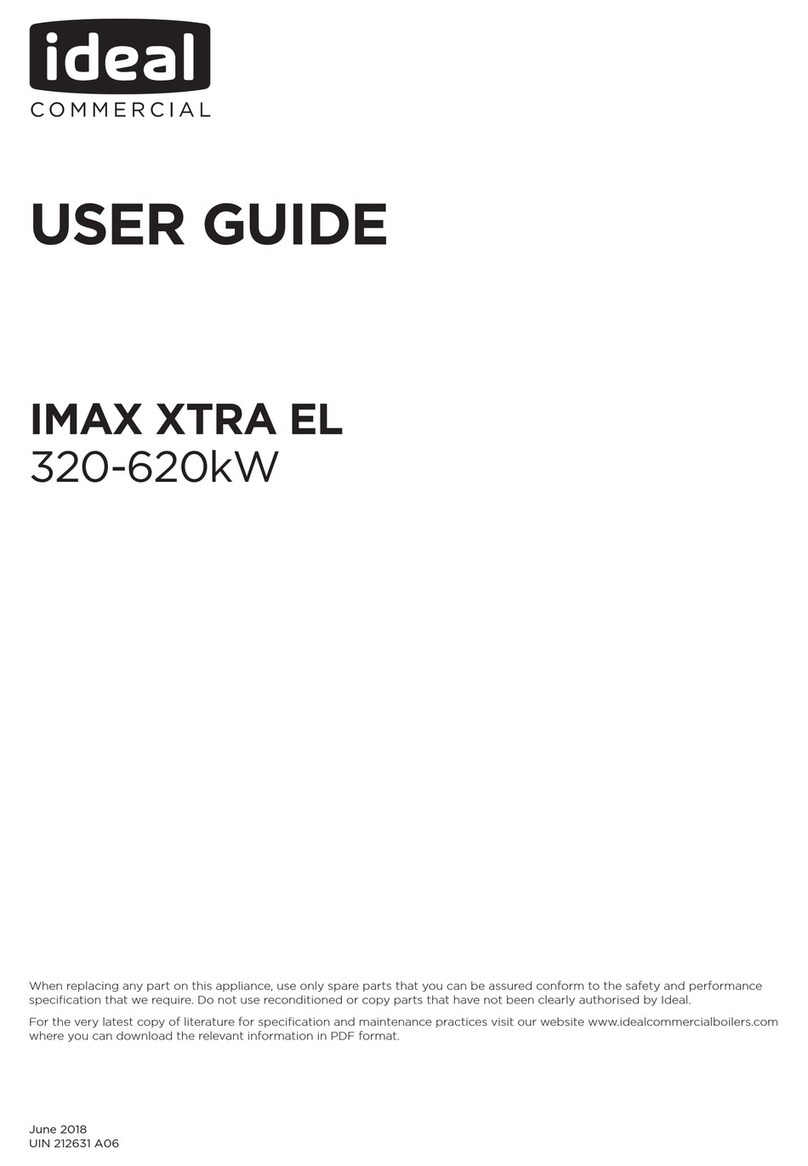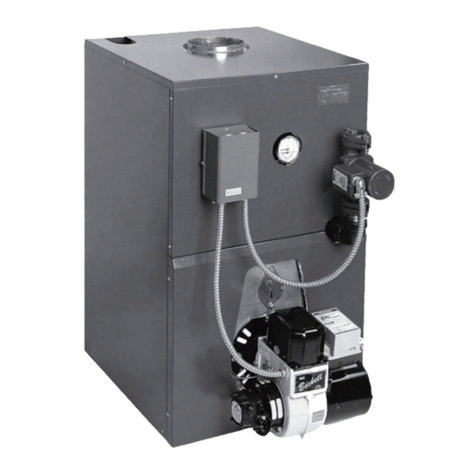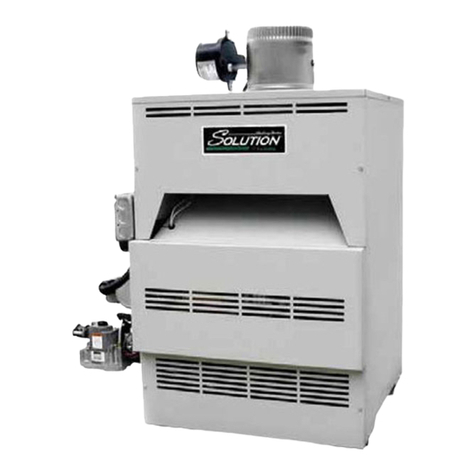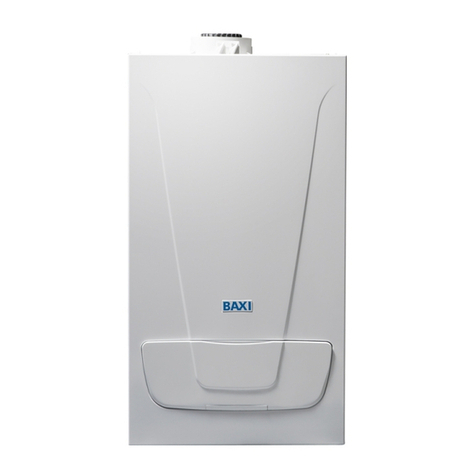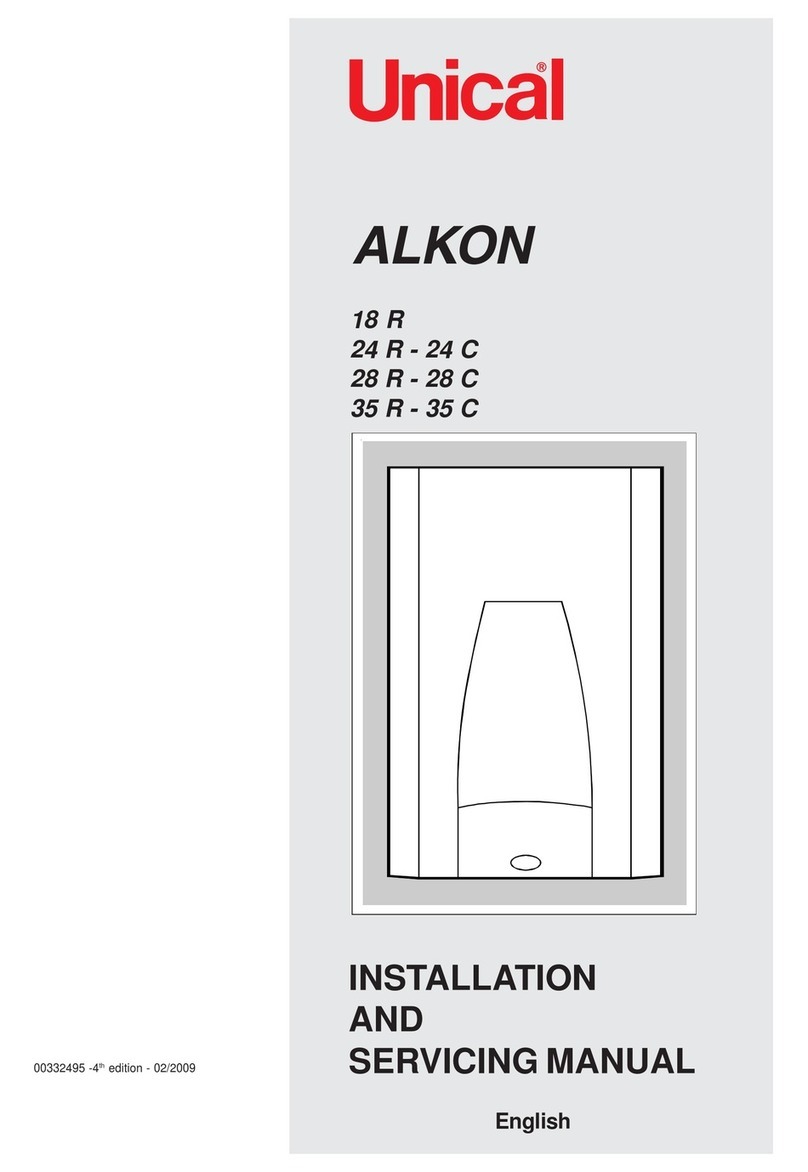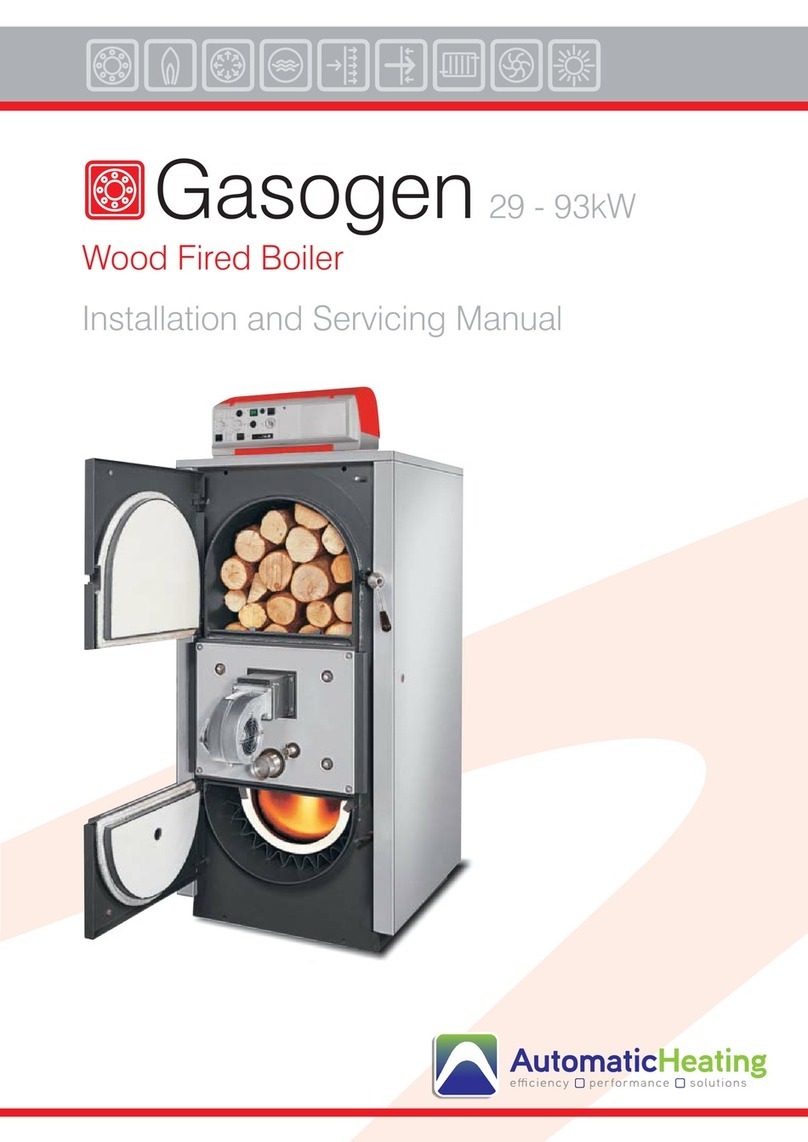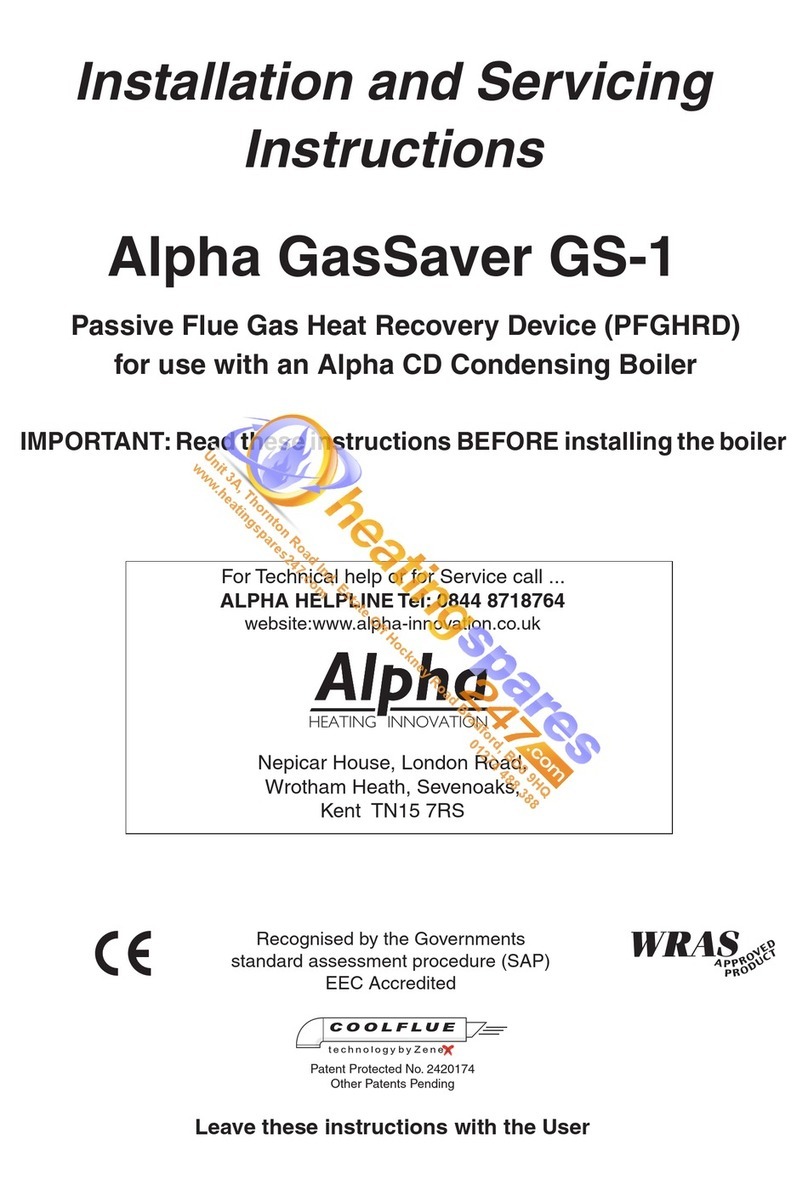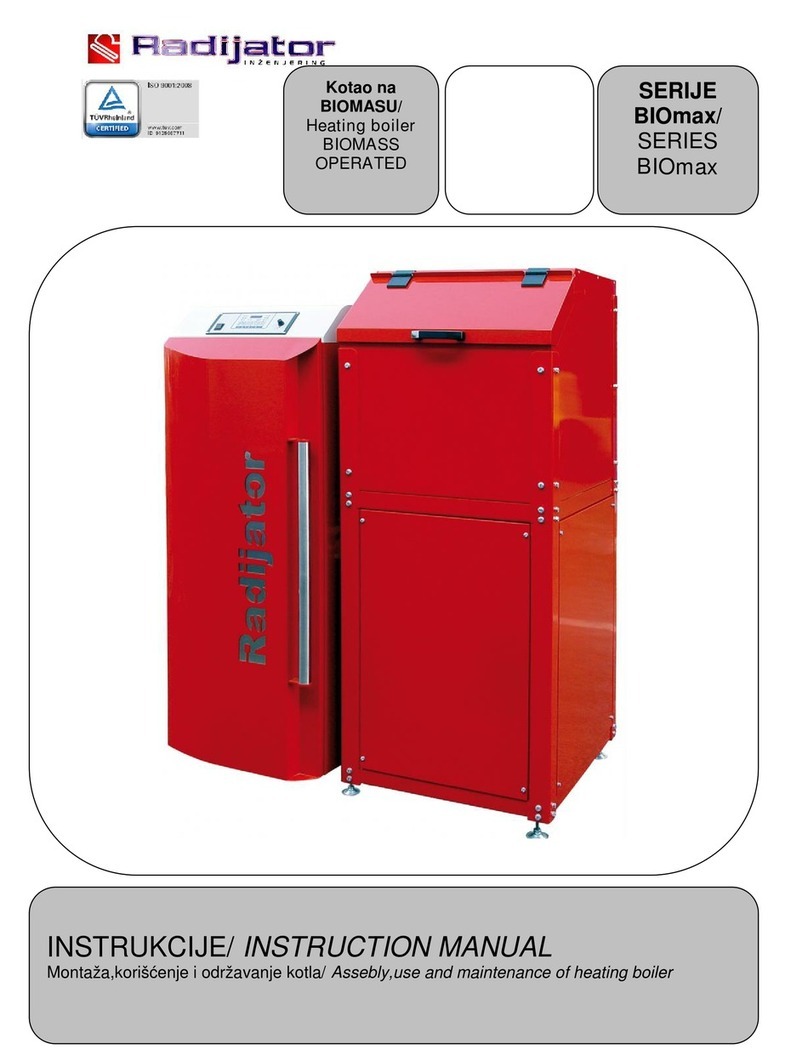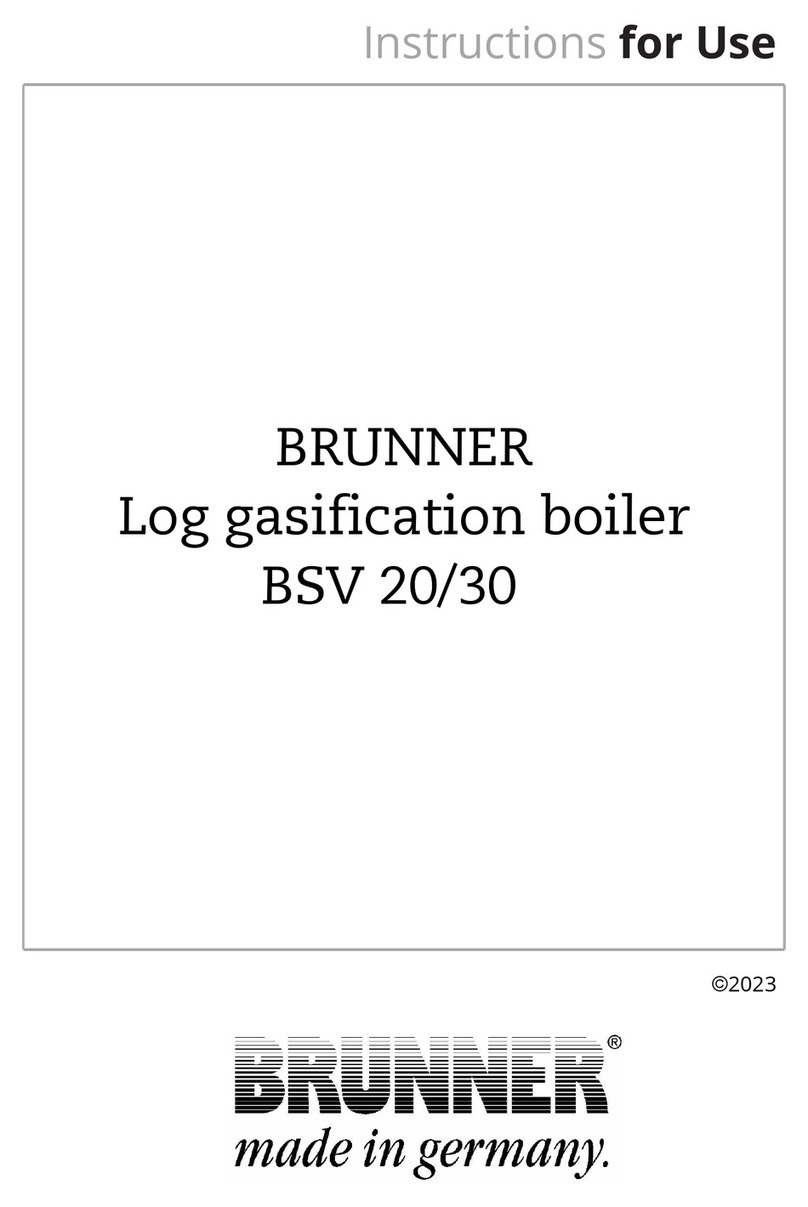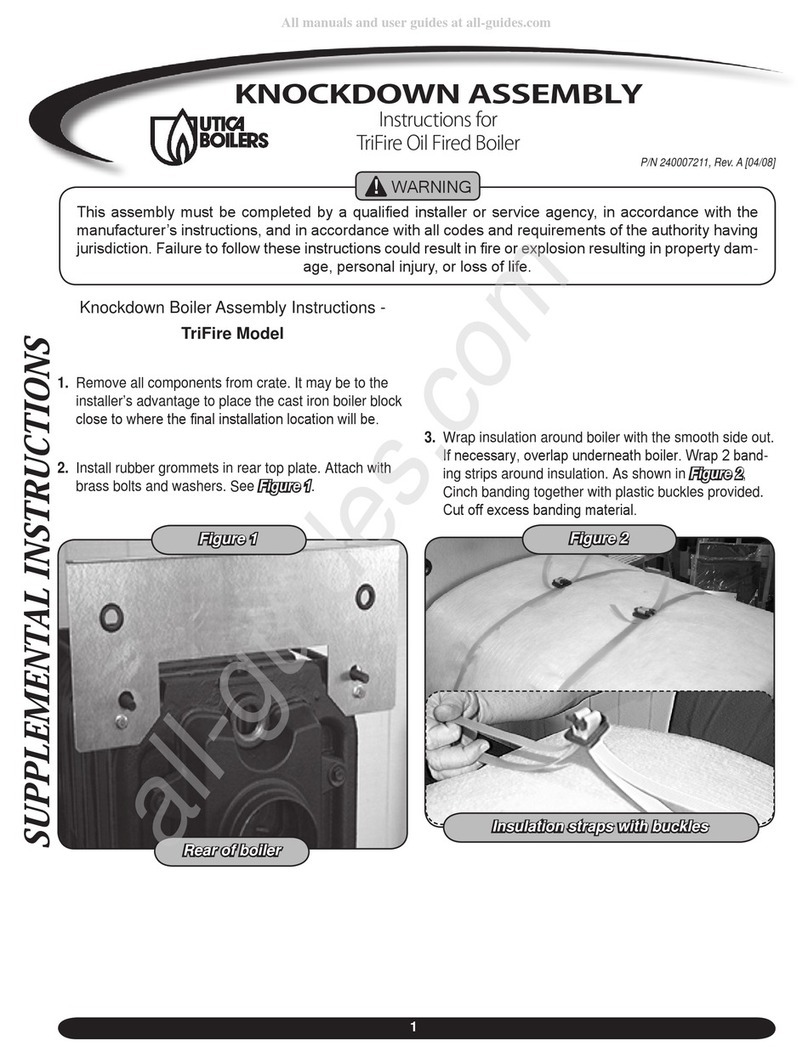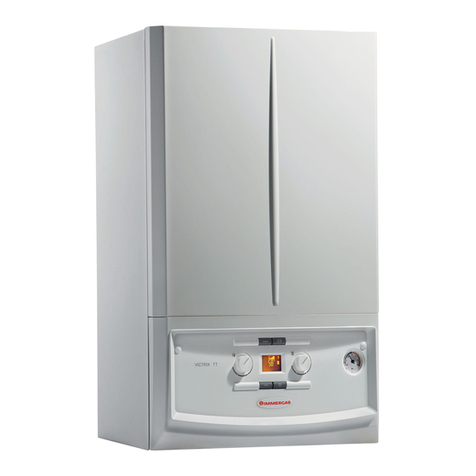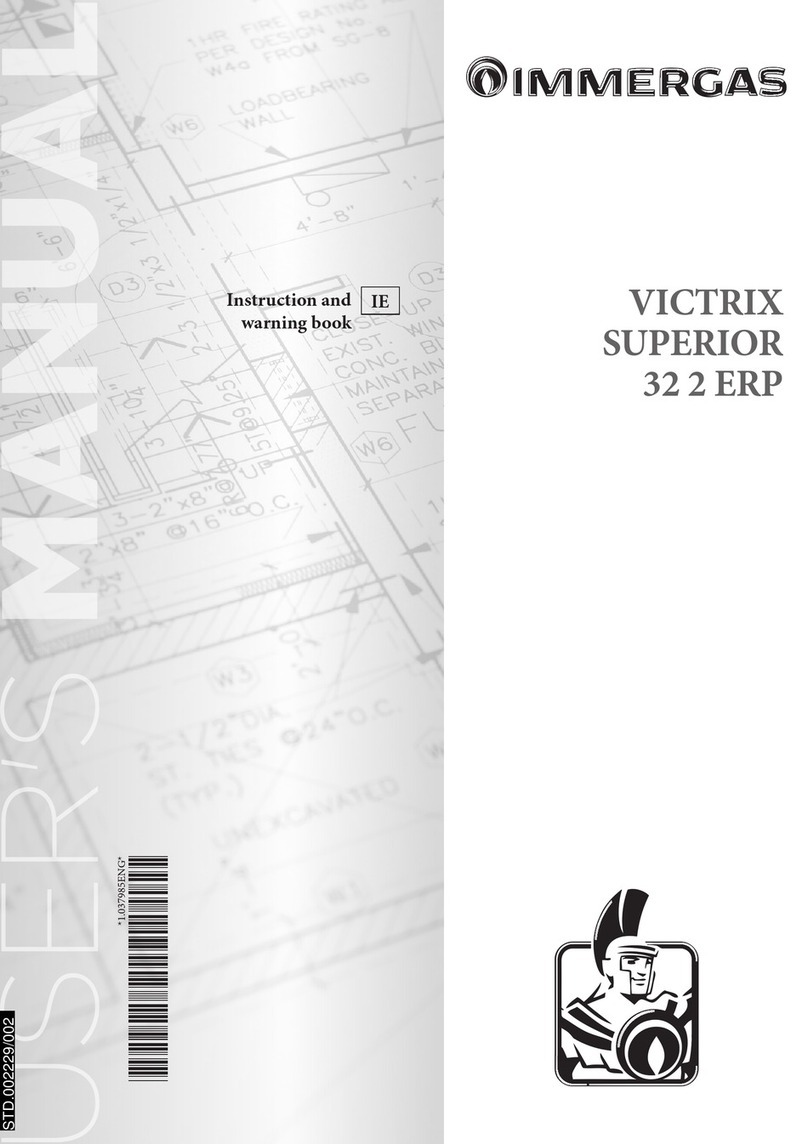
1-1
1-2
3 - IE
INSTALLATORUSERMAINTENANCE
YES NO
Height
(mm)
Width
(mm)
Depth
(mm)
890 580 380
ATTACHMENTS
GAS PLANT DOMESTIC
HOT WATER
G R M AC AF
1/2” 3/4” 3/4” 1/2” 1/2”
1.2 MAIN DIMENSIONS.
Key:
G - Gas supply
R - System return
M - System delivery
RC - Domestic hot water re-circ.
AC - Domestic hot water outlet
AF - Domestic hot water inlet
V - Electric attachment
1 INSTALLATION
OF THE BOILER
1.1 INSTALLATION
RECOMMENDATION.
e Zeus kW boiler has been designed for wall
mounted installation only; they must be used
to heat environments, to produce domestic hot
water and similar purposes.
e installation site and relative Immergas ac-
cessories must have suitable characteristics (both
technical and structural), in order to allow (al-
ways in safe, eciency and easiness conditions):
- installation (according to the legislation and
technical standards in force);
- maintenance operations (including those
scheduled, periodical, ordinary and special);
- removal (to the outdoors in a place suitable
for loading and transporting appliances and
components) as well as any replacement with
equivalent appliances and/or components.
e wall surface must be smooth, without any
protrusions or recesses enabling access to the
rear part. ey are NOT designed to be installed
on plinths or oors (Fig. 1-1).
By varying the type of installation the
classication of the boiler also varies, precisely:
- B22 type boiler if installed using the relevant
terminal for air intake directly from the room
in which the boiler has been installed.
- C type boiler if installed using concentric pipes
or other types of pipes envisioned for the sealed
chamber boiler for intake of air and expulsion
of fumes.
Only professionally qualied heating/plumbing
technicians are authorised to install Immergas
gas appliances.
Installation must be carried out according to the
standards, current legislation and in compliance
with local technical regulations and the required
technical procedures.
Installation of the Zeus kW boiler when powered
by LPG must comply with the rules regarding
gases with a greater density than air (remember,
as an example, that it is prohibited to install plants
powered with the above-mentioned gas in rooms
where the oor is at a lower quota that the average
external country one).
Before installing the appliance, ensure that it
is delivered in perfect condition; if in doubt,
contact the supplier immediately. Packing
materials (staples, nails, plastic bags, polystyrene
foam, etc.) constitute a hazard and must be kept
out of the reach of children. If the appliance
is installed inside or between cabinets, ensure
sucient space for normal servicing; therefore
it is advisable to leave a clearance of at least 3
cm between the boiler casing and the vertical
sides of the cabinet.
Leave adequate space above the boiler for
possible water and fume removal connections.
At least 60 cm must be le below the boiler
in order to guarantee replacement of the
magnesium anode. Keep all ammable objects
away from the appliance (paper, rags, plastic,
polystyrene, etc.).
Do not place household appliances underneath
the boiler as they could be damaged if the safety
valve intervenes (if not conveyed away by a
discharge funnel), or if there are leaks from the
connections; on the contrary, the manufacturer
cannot be held responsible for any damage
caused to the household appliances.
In the event of malfunctions, faults or incorrect
operation, turn the appliance
o immediately and contact a qualied technician
(e.g. the Immergas Technical Assistance centre,
which has specically trained personnel and
original spare parts). Do not attempt to modify
or repair the appliance alone. Failure to comply
with the above implies personal responsibility
and invalidates the warranty.
• Installation regulations: this boiler can be
installed outside in a partially protected area.
A partially protected location is one in which
the appliance is not exposed to the direct action
of the weather (rain, snow, hail, etc..).
Important: Wall mounting of the boiler must
guarantee stable and ecient support for the
generator.
The plugs supplied are to be used only in
conjunction with the mounting brackets or xing
template to x the appliance to the wall; they only
ensure adequate support if inserted correctly
(according to technical standards) in walls made
of solid or semi-hollow brick or block. In the
case of walls made from hollow brick or block,
partitions with limited static properties, or in any
case walls other than those indicated, a static test
must be carried out to ensure adequate support.
N.B.: the hex head screws supplied in the blister
pack are to be used exclusively to x the relative
mounting bracket to the wall.
ese boilers are used to heat water to below
boiling temperature in atmospheric pressure.
ey must be connected to a heating system and
hot water circuit suited to their performance
and capacity.
Anti-Legionella thermal treatment of the Im-
mergas storage tank (which can be activated
through the specic function present on the set
thermoregulation systems): during this phase,
the water temperature inside the storage tank ex-
ceeds 60 °C resulting in burns hazards. Keep this
DHW treatment under control (and inform the
users), to prevent unexpected damage to persons,
animals and objects. If required, a thermostatic
valve must be installed at the DHW outlet to
prevent burns.
